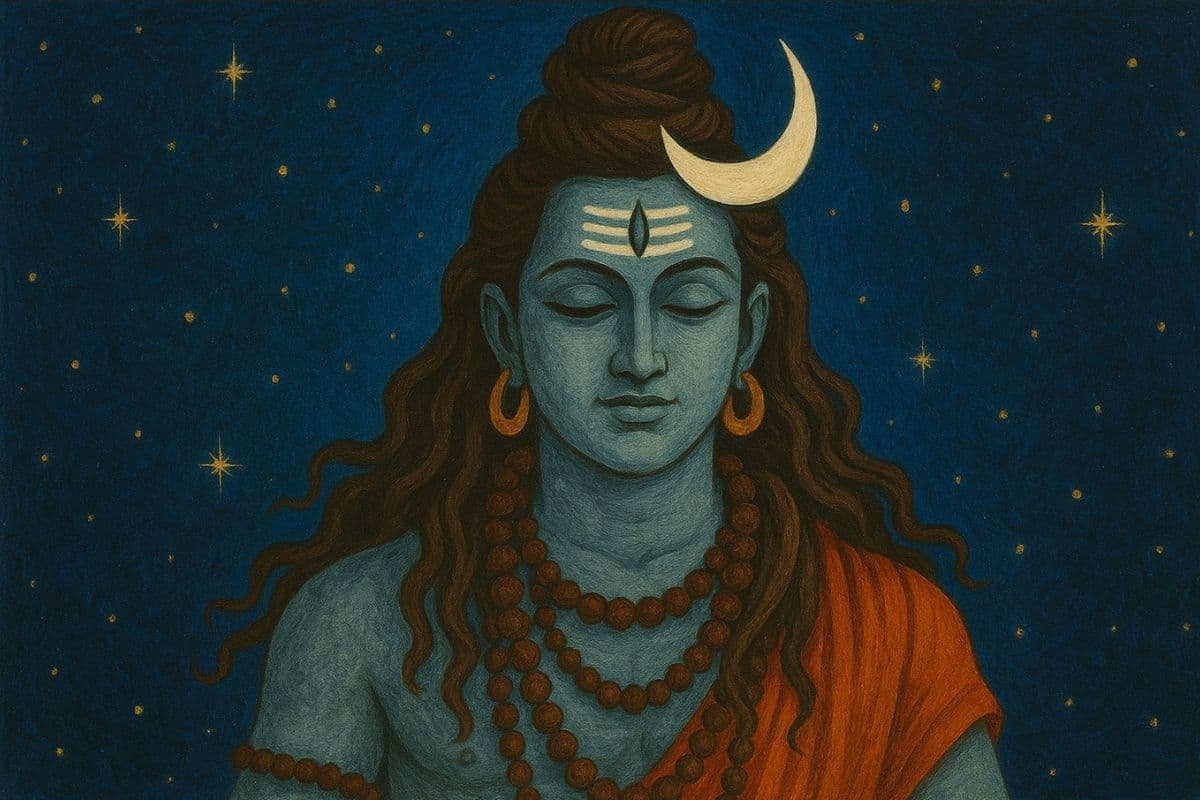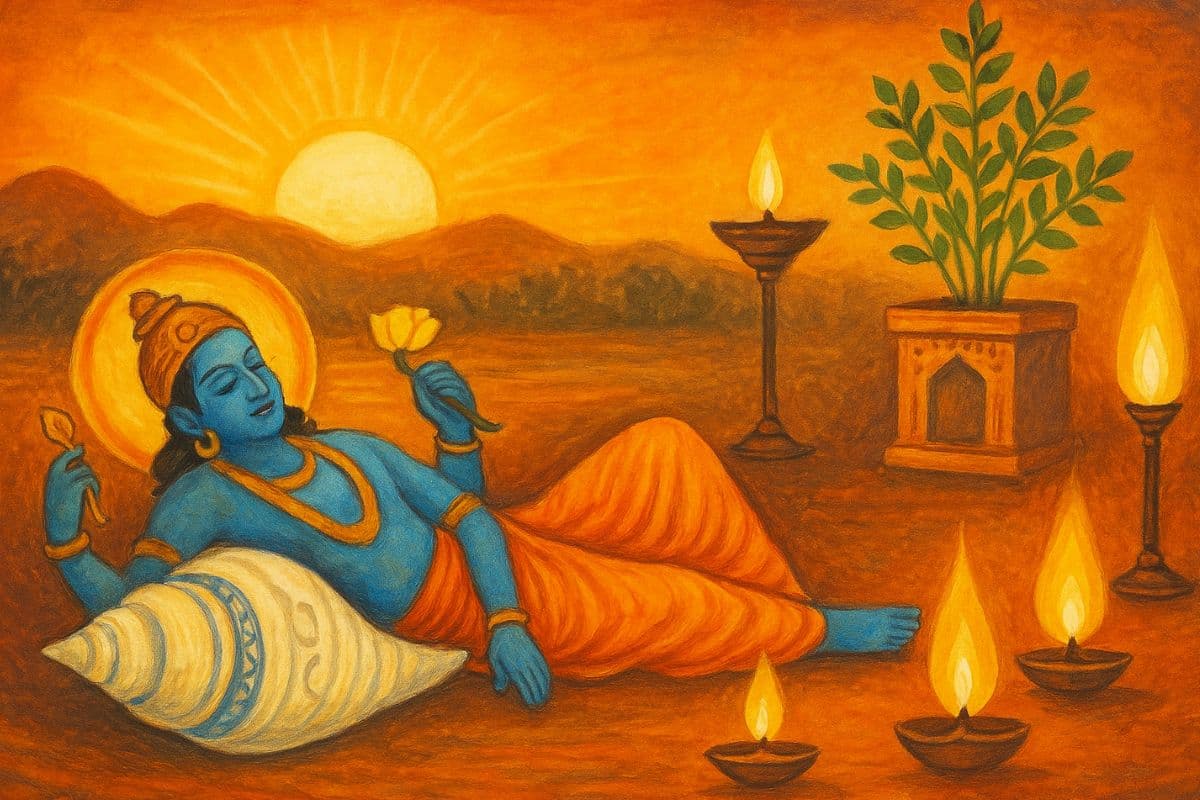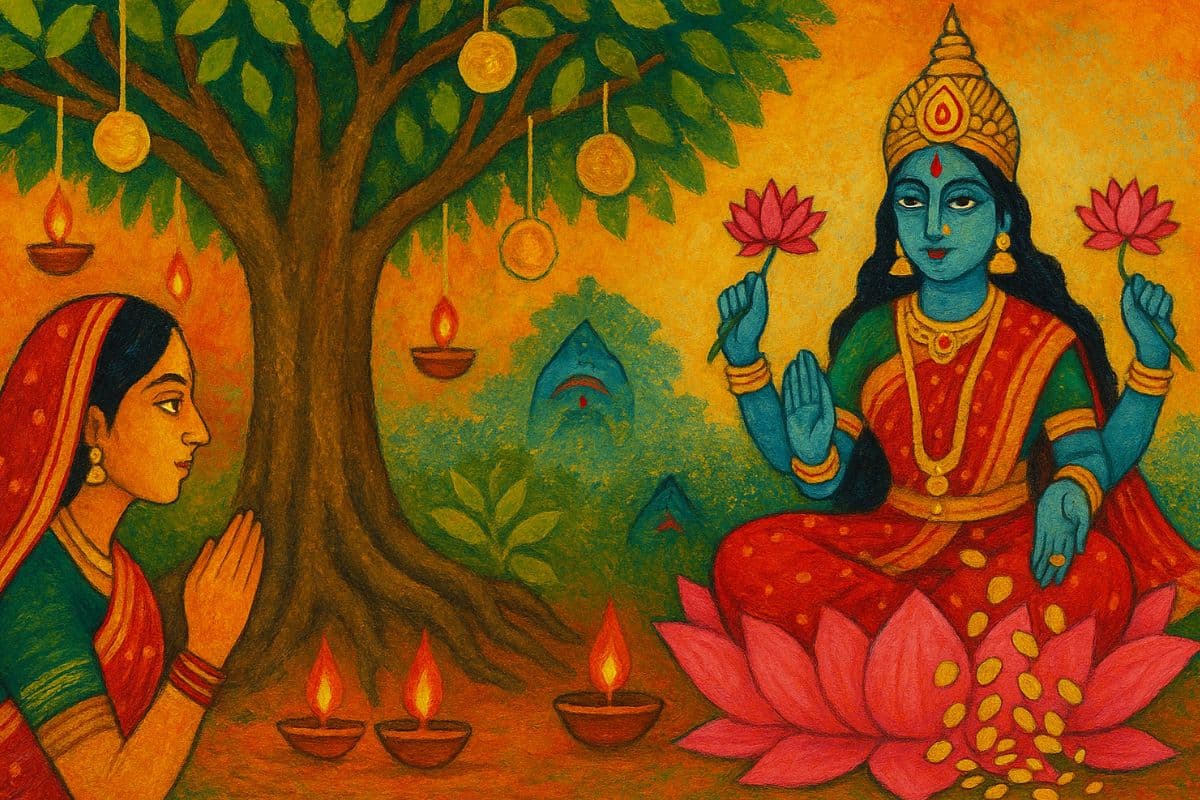Why is Shiva linked to the moon in Astrology? Spiritual meaning explained

Explore Shiva’s link with the Moon and its spiritual meaning
If you have ever seen an image of Lord Shiva, one detail always stands out. Beyond the blue throat, beyond the flowing Ganga in his hair, sits a silver crescent moon. It rests lightly on his matted locks, glowing like a jewel borrowed from the cosmos. But why the Moon? Why is the wild, fiery, world-destroying Shiva tied to something so gentle, so cool, so changeable? The answer runs deep, into myths, astrology, and the rhythm of time itself.
Time is a Circle
Time is not a straight line; it moves in circles. Things are born, change, end, and begin again. The Moon, which grows and shrinks every month, is a clear symbol of that cycle: it vanishes and returns, night after night. Shiva, as the spirit of transformation, stands for that same rhythm of ending and renewal. The little crescent on his head is a quiet reminder that nothing lasts forever, but nothing is ever truly lost.
Shiva’s Calm in Chaos
Shiva is fierce, yes, but he is also deeply calm. When he sits in meditation, entire worlds could crumble and he would remain unmoved. The Moon symbolises this side of him. Its cooling light softens his fire. It shows that destruction is not always fiery; it can also be silent, graceful, and balanced. The Moon on Shiva’s head is his promise that even when life feels chaotic, there is always serenity hidden beneath.
Master of the Mind
In astrology, the Moon is linked to our mind and emotions. Just as the Moon changes shape each night, our moods rise and fall too. Shiva, wearing the Moon, shows that he has full control over these shifts. The crescent on his head teaches us that the mind can be steady, even when it feels restless. We, too, can calm our thoughts through simple practices like meditation, prayer, or quiet awareness. In this way, we ‘wear the Moon’ in our own lives, just as Shiva does.
Stories that tie Shiva and the Moon
This link is not just symbolic. Mythology is full of moments where Shiva and the Moon save each other.
Samudra Manthan: When gods and demons churned the cosmic ocean, poison rose up to destroy everything. Shiva drank it, his throat turning blue from the burn. To soothe him, the Moon settled on his head, cooling the fire within.
Chandra’s Curse: The Moon god, Chandra, was cursed by his father-in-law to fade away. Only Shiva offered mercy. Chandra prayed, and Shiva restored his light, but only in cycles. That’s why the Moon waxes and wanes, carrying both blessings and lessons.
These stories remind us that even the brightest beings need healing, and even the fiercest gods show compassion.
Spiritual Meaning of Shiva and the Moon
In astrology, the Moon reflects the mind: our thoughts, emotions, and inner peace. When the Moon is strong, we feel calm, steady, and focused. When it is weak, the mind turns restless, caught in worry or sleeplessness. Shiva, who carries the Moon upon his head, shows us how this energy can be balanced. Mondays, the day of the Moon, are sacred to him. Offering prayers or chanting his name on these days, especially under the waning Moon, is believed to soothe the heart and clear emotional wounds.
Maha Shivaratri, the great night of Shiva, always falls during the dark half of the Moon. As the Moon disappears, Shiva’s presence reminds us of a deeper truth: every ending is only the doorway to a new beginning. The fading Moon is not loss but renewal: a cycle that Shiva, lord of transformation, keeps turning.
Remedies: Inviting Shiva’s Moon energy
If you feel restless, anxious, or overwhelmed, astrology offers simple ways to align with Shiva’s lunar calm.
Chanting Mantras: Words carry vibration, and vibration carries power. Two chants are especially connected with Shiva and the Moon:
-
Mahamrityunjaya Mantra: For healing, peace, and protection from fear.
-
Om Namah Shivay: A simple yet mighty chant that invokes Shiva’s grace.
You can listen to and chant along with both at AstroSure.ai to invite balance and clarity.
Moon Offerings: On Mondays or full Moon nights, offer water or milk to a Shiva Linga. This mirrors how the Moon cooled Shiva’s throat and strengthens your own Moon energy.
Meditation at Night: Spend a few minutes under the Moonlight. Sit quietly, breathe deeply, and imagine the cool glow settling your thoughts. This simple ritual honors both the Moon and Shiva’s meditative calm.
The Sun, the Moon, and Shiva
Shiva is not only tied to the Moon but also to the Sun. The Sun is seen as blazing truth, the force that gives life and energy to all. Shiva is often called the eternal flame, the light behind every other light. But his bond with the Moon feels closer to us, more personal. The Moon is soft, gentle, and guides us quietly, while the Sun is bold and bright. One shows us the day, the other the night. Together they balance each other, just as Shiva balances creation and destruction, fire and calm, endings and new beginnings.
When you picture Shiva, don’t just see the fearsome destroyer. See the Moon glowing in his hair. See how he holds both fire and calm, destruction and renewal, poison and healing. Astrology shows us that the Moon is our mind, always shifting. Shiva shows us that the mind can be mastered. And together, they whisper a truth we often forget: balance is everything.



